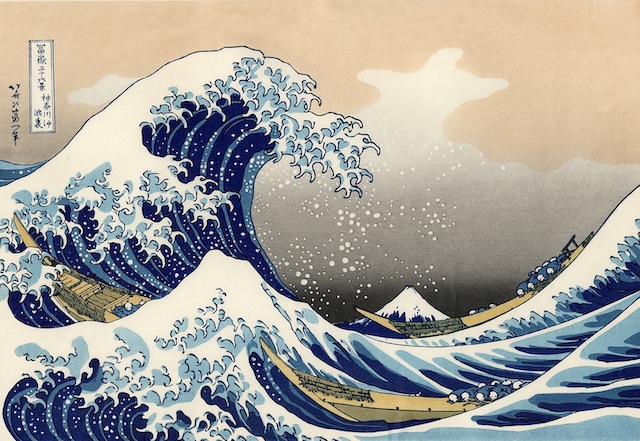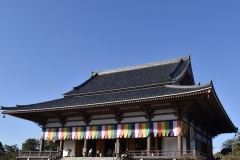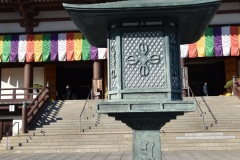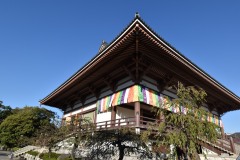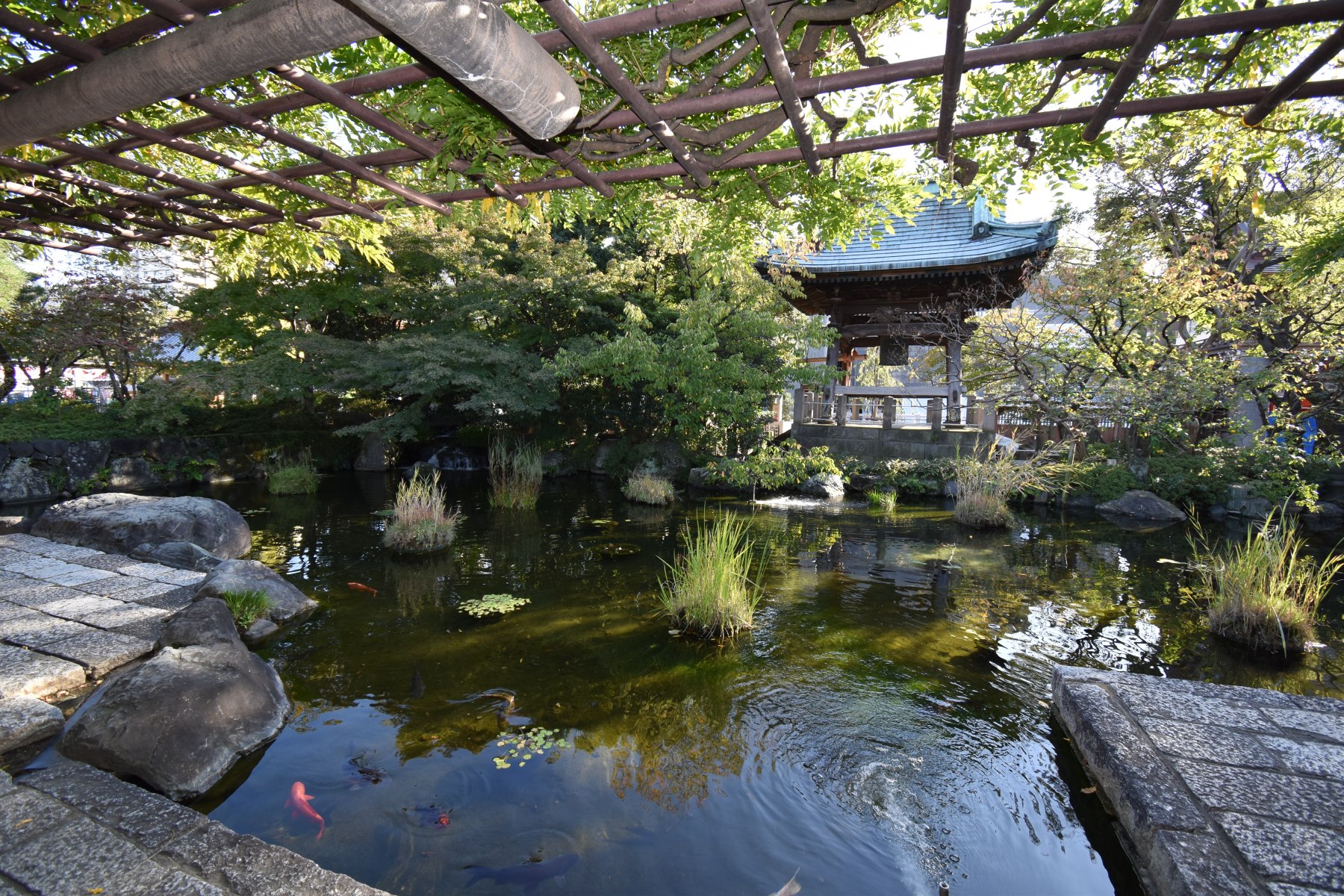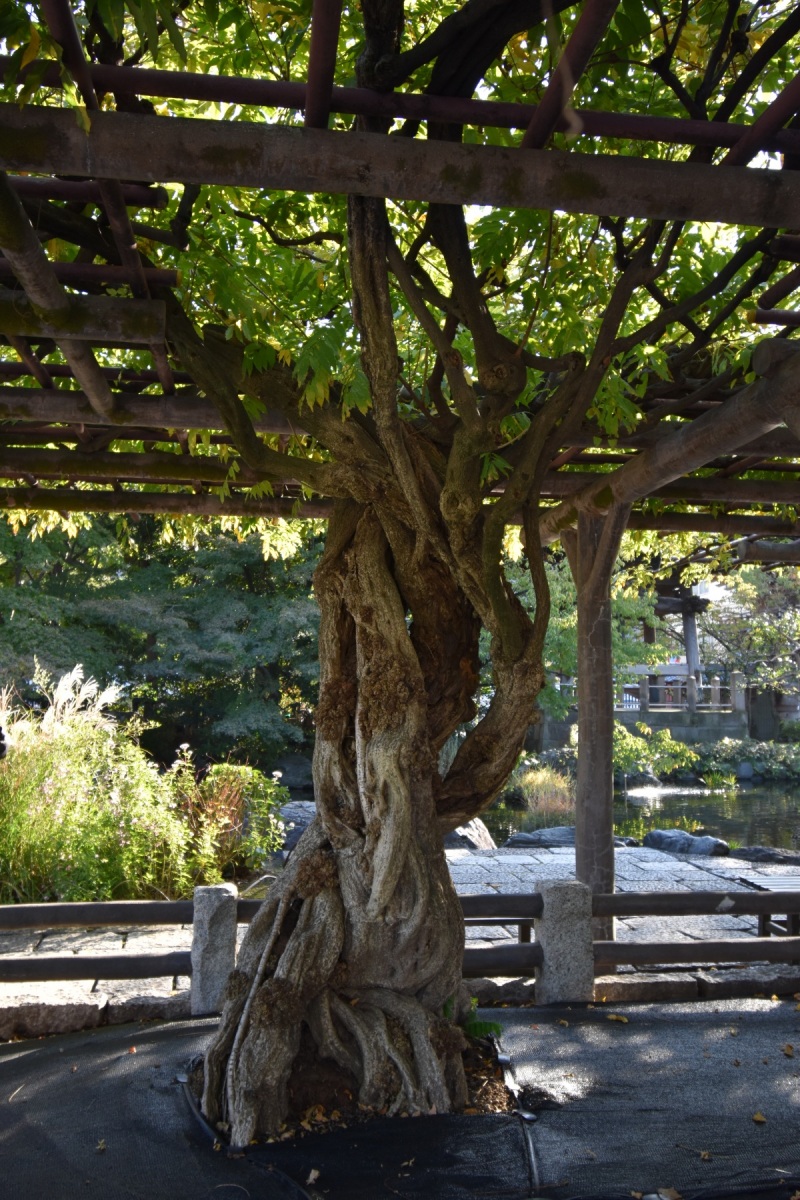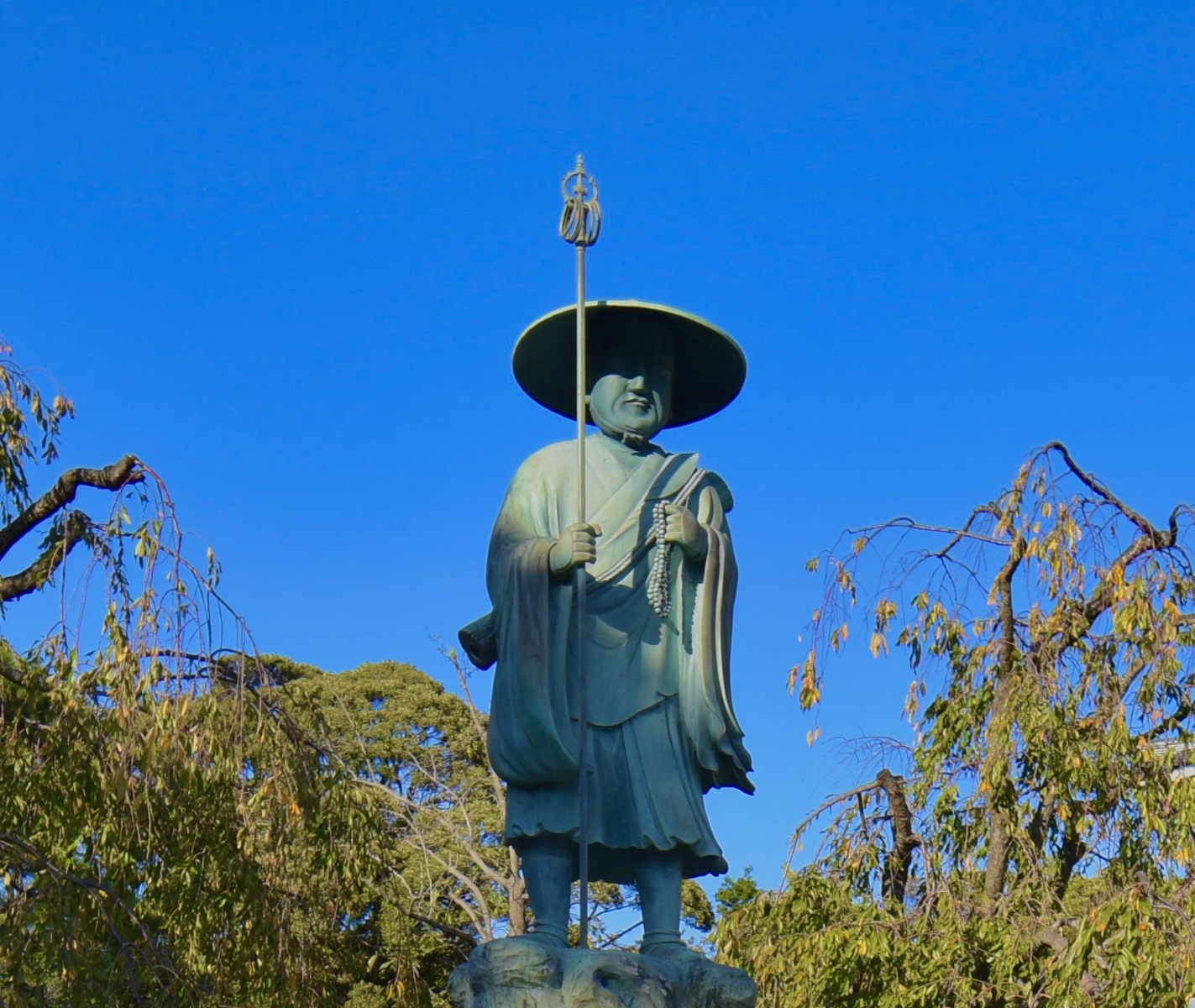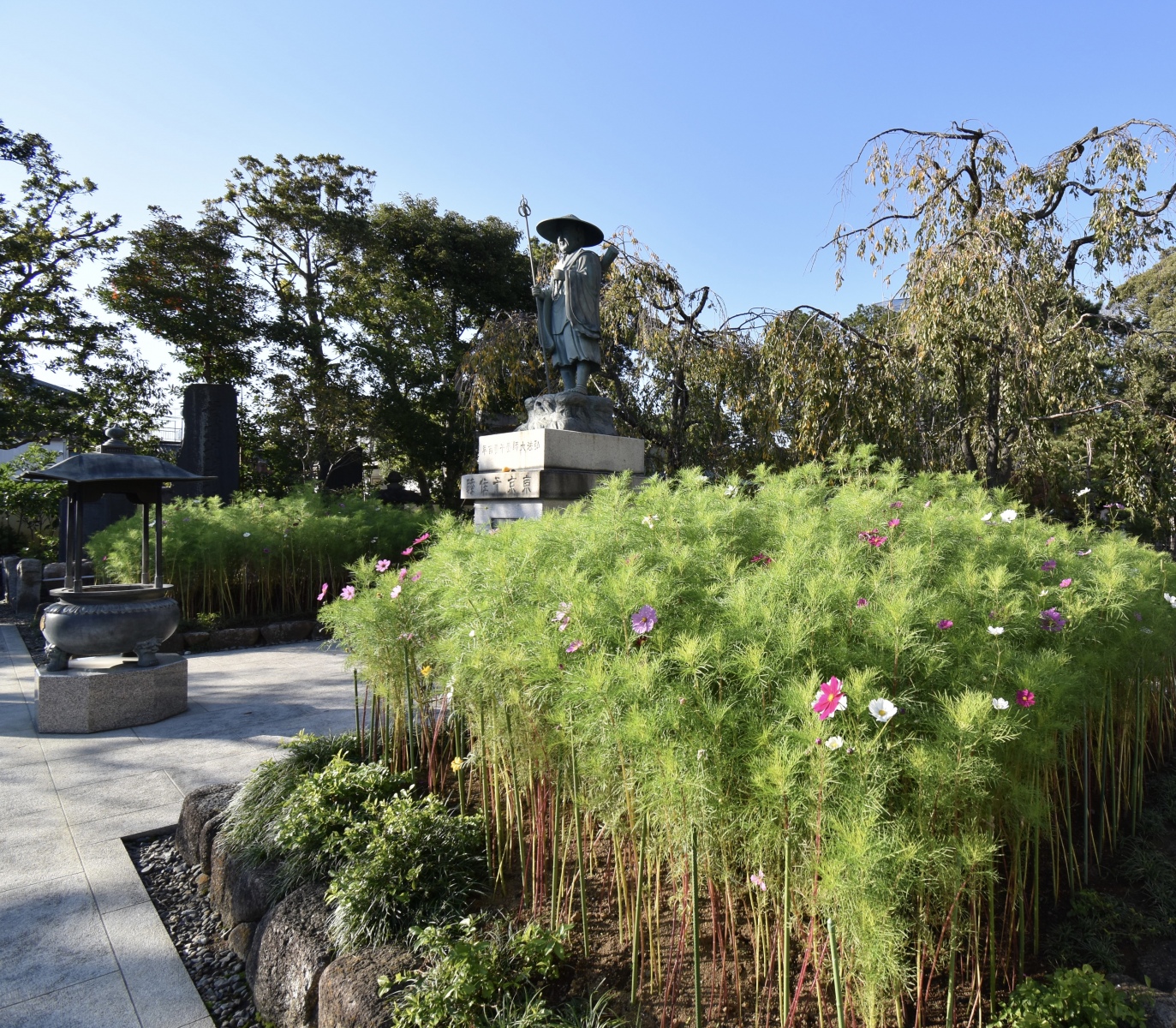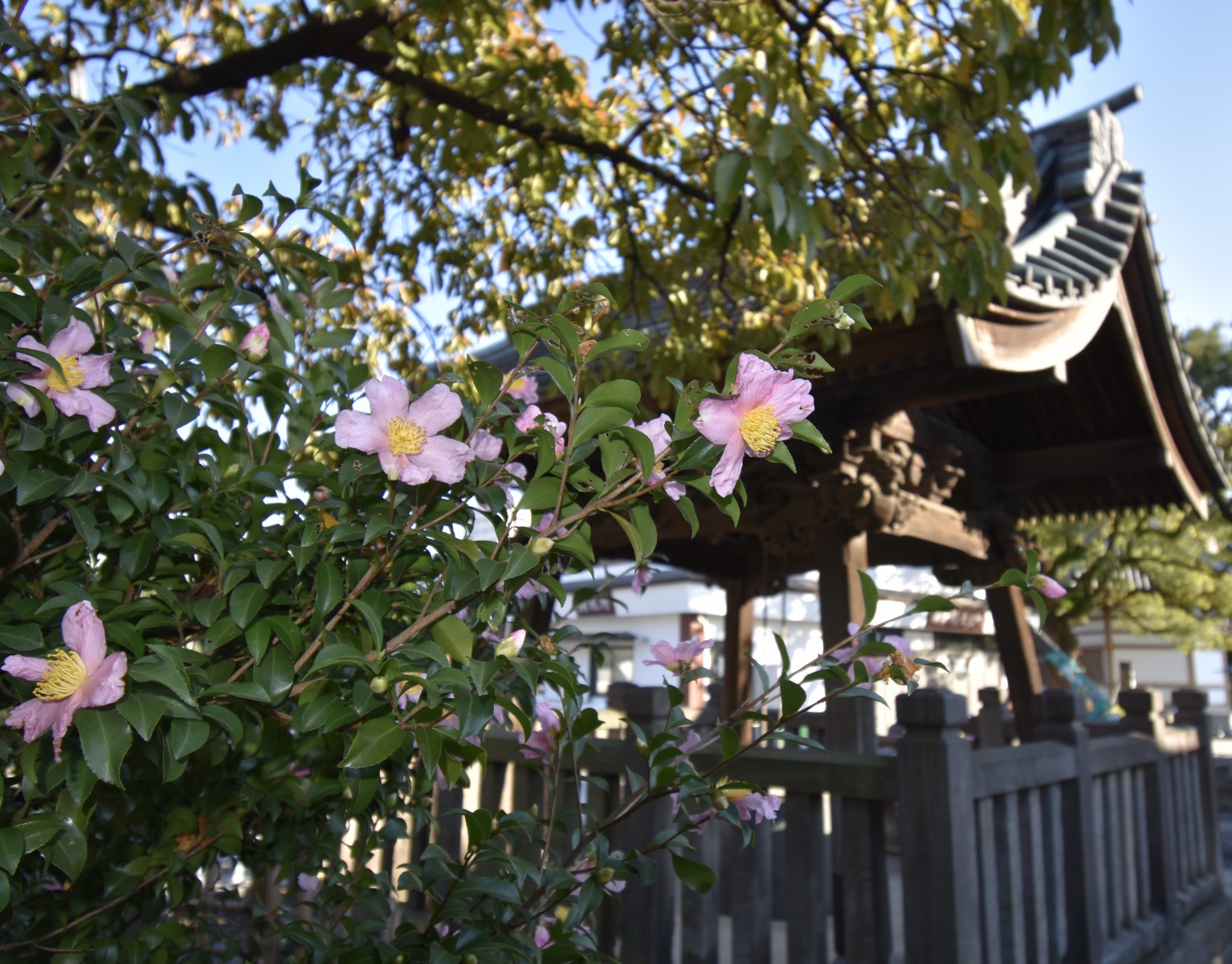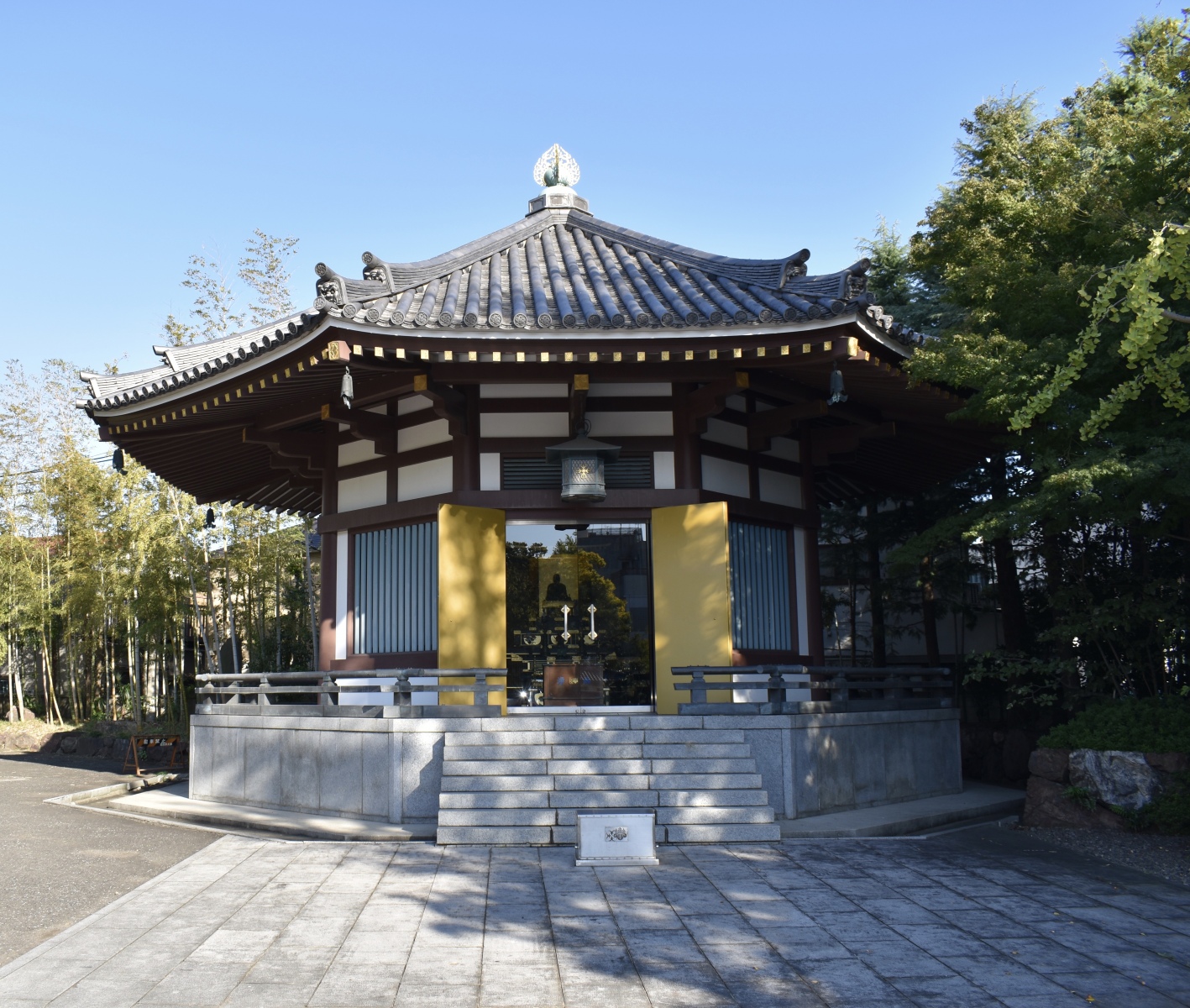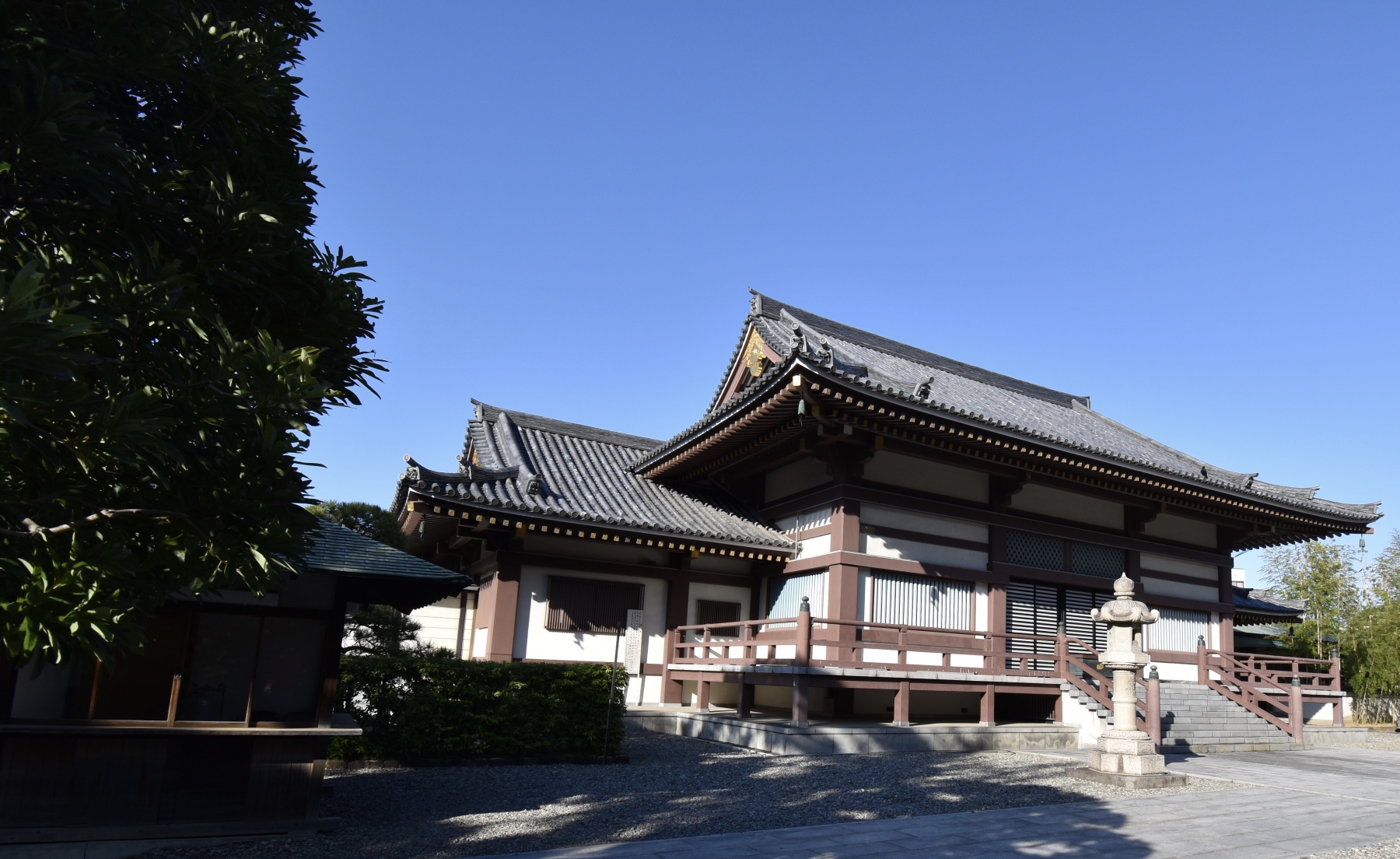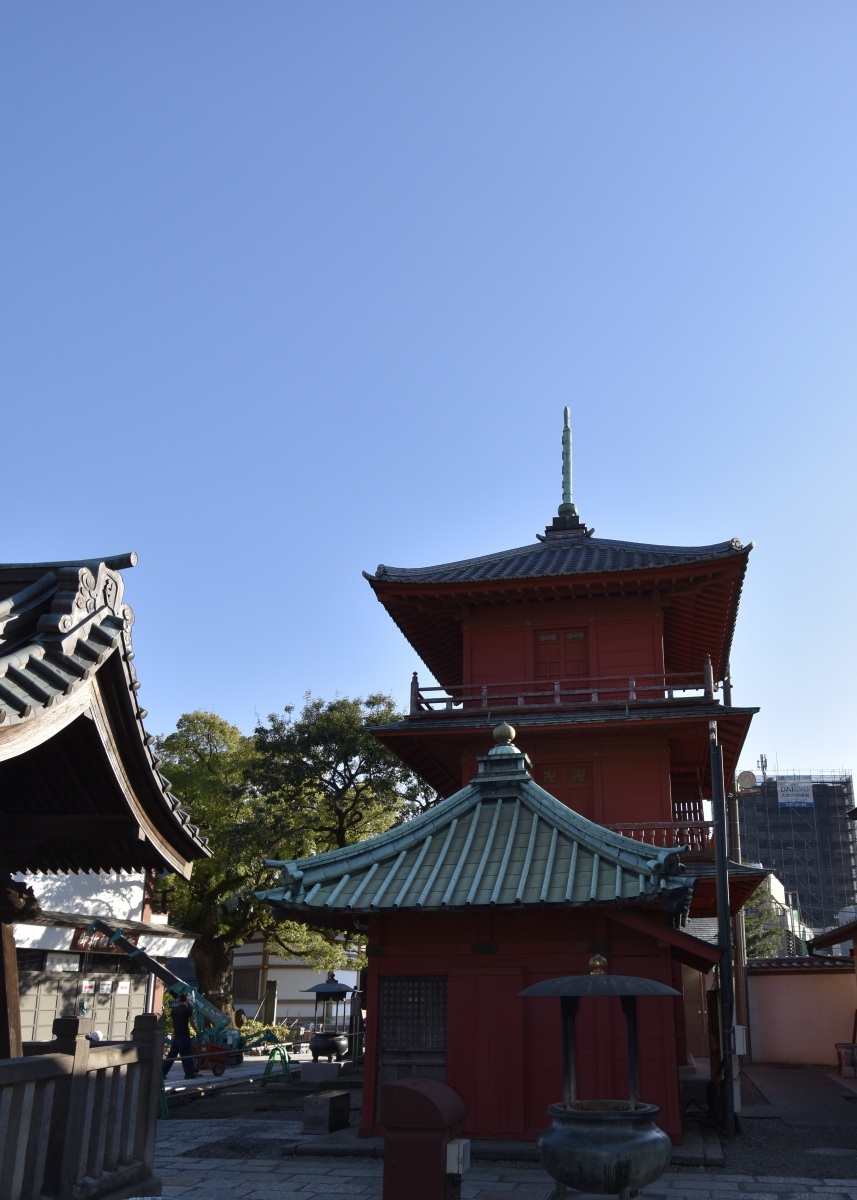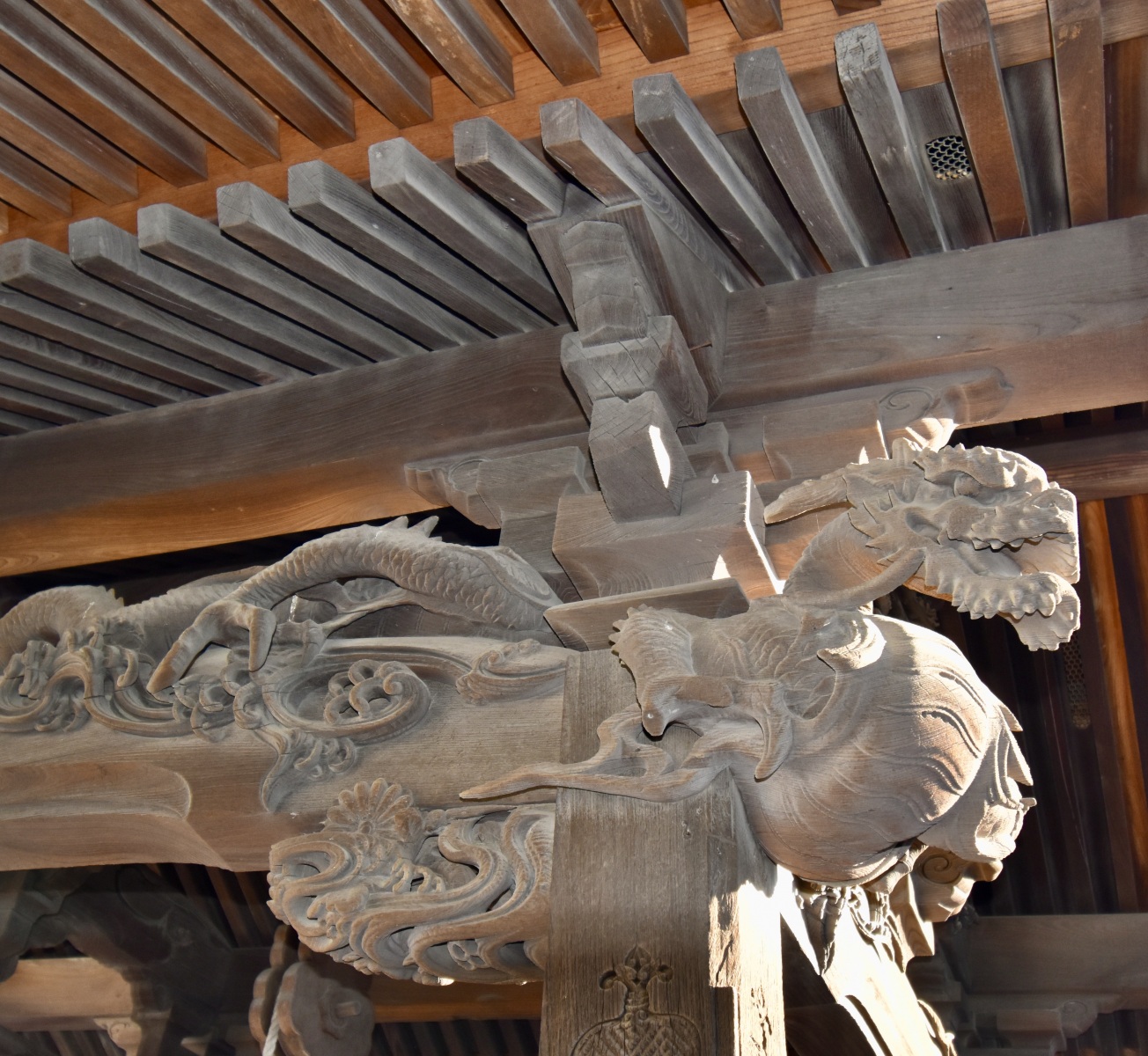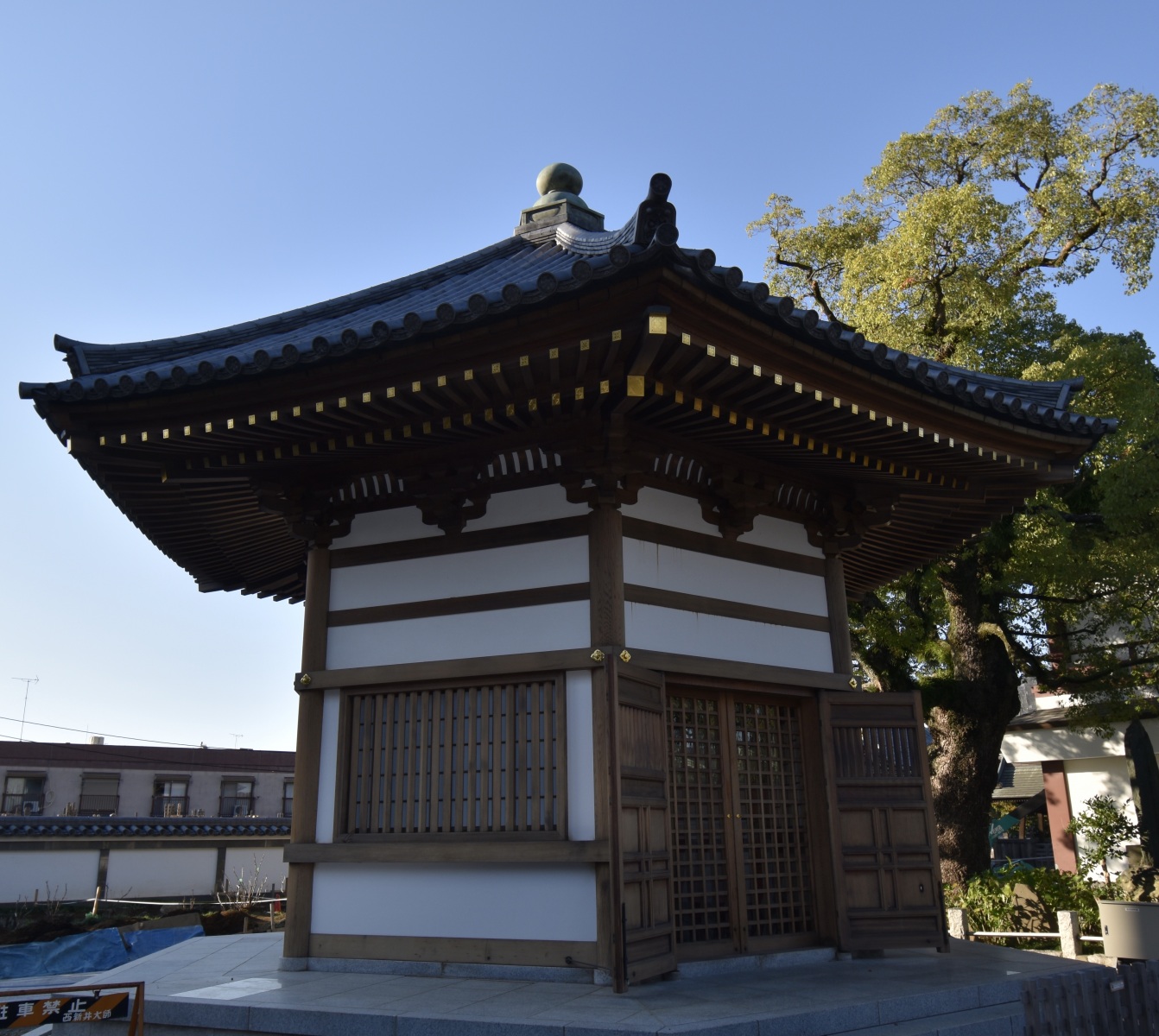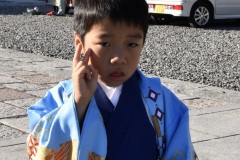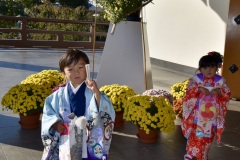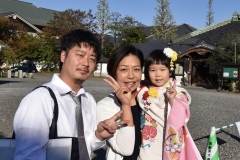I have initiated my “discovery walks” in Tokyo beginning with a stroll to the grounds of our neighborhood temple, the Nishiaraidaishi Daishi Sou-ji Temple.
One interesting benefit of taking these walks is making unexpected discoveries, enjoying spontaneous experiential activities or engaging with interesting people. Indeed all three were features of my temple visit.

ALTEC – our local jazz cafe
Of special note, was finding a jazz club just a short from our condo. We plan to visit soon.
___________________
Discovery Walk 11/05/2019

Nishiaraidaishi Daishi Sou-ji Temple
It was a beautiful warm fall afternoon for a 15 minute walk to my destination. The short trip took me through local neighborhoods of traditional Japanese homes and small shops of all type, an environment very unlike our condo’s modern high-rise location, that confirmed Adachi’s reputation that it retains much of the feel of “old” Tokyo.

Shoueikai, the shopping street that leads to the main gate of the temple presents a great leisurely opportunity to take in the atmosphere of the Nishiarai area, sample local food and appreciate the skills of the various craftspeople in the shops.

Sanmon Gate is the main gate of the temple. It was erected in the 19th century.
Just after I entered the temple grounds an unusual sight I had not seen on other temple visits caught my attention. With the help of a local temple guide (and my handyPocketTalk translation gadget) I learned that it was a Japanese Buddhist statue of Shio Jizo covered in table salt!
 The guide explained that the proper way in which to pray to this particular type of Jizo statue is to first pick up some of the salt at the statue’s feet and then rub the salt on the part of the statue’s body that you are having trouble with. By doing so she said it is believed that your pain will be taken away. I had to try it. Not sure if it was Jizo or a very busy day, but I did have a comfortable pain-free night’s sleep!
The guide explained that the proper way in which to pray to this particular type of Jizo statue is to first pick up some of the salt at the statue’s feet and then rub the salt on the part of the statue’s body that you are having trouble with. By doing so she said it is believed that your pain will be taken away. I had to try it. Not sure if it was Jizo or a very busy day, but I did have a comfortable pain-free night’s sleep!
Although I spent time doing pre-trip research, I was not prepared for the beauty of the temple’s grounds, structures and gardens. I was pleasantly overwhelmed by the experience.
To put the photo gallery in context, the following is a summary of my research and commentary on the temple visit.
According to legend, the Nishiaraidaishi Daishi Sou-ji Temple, dedicated to Shingon Buddhism, was founded in the 9th century. Known for its abilities to ward off evil, this temple is famous for dispelling bad luck or feelings of ill will. It is where many Tokyoites gather on New Year’s Eve for the ringing of the temple bell, said to ward off misfortune in the coming year. Some years ago Keiko and I joined a crowd of many thousands here to welcome in the New Year. I am looking forward to having the experience as a “local” this year.
This sacred site is also one of Japan’s “flower” temples, its spacious grounds and gardens full of seasonal blooms all year long, especially the many varieties of colorful peony flowers for which the temple is renowned.
While a stroll through the grounds and gardens would be a wonderful experience at any time, there is almost universal agreement that the temple is best enjoyed on an Ennichi (holy day) festival held the 21st day of every month. These festive events apparently draw large crowds and vender stalls selling Nishiarai local food and other products.
Two festivals are of particular note. One is the highly regarded Flower Festival held in April when the peony flowers and wisteria tress are in full bloom. I also anticipate breath-taking visuals of cherry blossoms in the spring. The other is the Osame no Daishi, which is the last Ennichi festival of the year on December 21st, said to be an exceptionally lively event day.
In my research I also discovered that during the temple’s April Flower Festival, you can put on a happi coat to participate in the festival’s manto mikoshi junko, or mikoshi procession and help carry the famous ceremonial portable shrine. I have registered this once-in-a-lifetime experience on my personal bucket list for next April 21st!
Many of the temple’s grounds and buildings were undergoing construction and maintenance in readiness for the coming holiday season. Consequently I did not get to see the many important works and treasures that are held in this temple. However, I strolled the grounds and gardens, marveled at the incredible architectural construction and relaxed by the beautiful and restful ponds and waterfalls.
The unexpected dividend to the visit was the presence of many Japanese families with their young children who were at the temple for Shichi-Go-San, an event to celebrate children’s growth and grant them self-awareness about their status as children. The children wear traditional clothing such as kimonos, haori coats and hakama skirts, and take commemorative photos with their families. Seeing and engaging with them added a wonderful human dimension to my visit.
While I intend to visit the temple on its festival days, being present in a quiet everyday environment was a calming experience. It was a perfect beginning to my Japan discovery walk plan.

